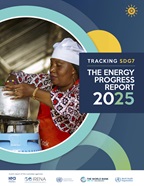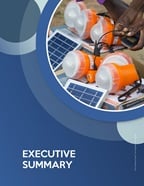
Health science and policy summaries
Concise overviews of current evidence on air quality, energy access, climate change, and health
Highlights

Concise overviews of current evidence on air quality, energy access, climate change, and health

WHO invites governments, agencies and organizations to pledge voluntary actions to reduce the health impacts of air pollution by 50% by 2040.
.jpg?sfvrsn=d51a0bea_8)
Stop polluting the air we breathe – prevent diseases and save lives
/country-readiness-strengthening-(crs)/community-readiness-and-resilience-(crr)/beat-the-heat-banner-cropped.jpg?sfvrsn=a5bbb703_3)
Initiative against extreme heat and related environmental health risks in workplaces and major events
News
All →Factsheets
All →Calls For
All →WHO, as the coordinating authority on international health, supports countries in protecting public health through evidence-based policies and actions....
Exposure to air pollution and its associated health impacts are affected by land use practices including their regulation and enforcement. Understanding...
Exposure to green spaces is widely associated with health benefits, including mental (e.g. reduced risk of depression and anxiety), physical (e.g. improved...
Sand and dust storms (SDS) result from turbulent winds that raise large quantities of particles from the ground into the air in emission areas. Emission...

Tracking SDG 7: The Energy Progress Report 2025 finds that almost 92% of the world’s population now has basic access to electricity. Although this...

The Energy Progress Report 2025 finds that almost 92% of the world’s population now has basic access to electricity Although this is an...

The directory is an online repository with more than 200 open access resources and tools updated on a regular basis that provide information on the importance...

The WHO Air Quality, Energy and Health Science and Policy Summaries (SPS) provide concise overviews of current knowledge and evidence on topics related...
Multimedia
All →VGS Hello, and welcome to Science in 5. I'm Vismita Gupta-Smith. We are talking today about WHO 's new Air Quality Guidelines and our expert is Dr Maria Neira. Welcome, Maria. Maria, tell us what is new in WHO's new Air Quality Guidelines?
MN What is new, essentially, is that we need to lower the recommended levels of exposure to air pollutants in order to protect people's health. So we know now that even exposure to a very low levels of certain pollutants that we are breathing every day will put us at risk. And that's why, for six key pollutants, we are recommending lower levels that will be protecting your health. The important message of these guidelines is that if those recommendations of WHO are implemented, particularly for PM 2.5, which is one of the most dangerous for our health, we could save 80% of the total number of deaths that we have every year due to air pollution, and that number is 7 million premature deaths caused by exposure to air pollution.
So as you can see Vismita we have an incredible opportunity here that we cannot miss to protect our health.
VGS Maria, elaborate please on these six pollutants that we must control in the air that we breathe.
MN Yes, they are six pollutants that are very much of concern for our health. One of them is the so-called PM so particulate matter 2.5. It's such a small particle that can go very easily to your lungs and from our lungs will not stay there. It can go even to the bloodstream, and from there reach any organ in our in our body. Then we have PM10, which is a little bit bigger. And then other four pollutants that are coming essentially from traffic or from the combustion of fossil fuels.
And I'm sure that you hear about SO2 or NO2 or ozone or carbon monoxide. All of those six are the ones that we are targeting. And if we are successful in implementing those new recommendations and lowering the levels of those six pollutants, we can save many, many lives.
VGS Maria, what have we learned so far about COVID-19 and air pollution?
MN It's clear that the bad quality of the air we breathe will be a major risk factor for acute and chronic respiratory diseases and cardiovascular diseases. In addition to that, if you are exposed to air pollution, you will develop certain diseases, underlying diseases that will give you a greater possibility of developing severe cases of COVID, if you are affected. So we see a clear relationship between air pollution and the burden of COVID-19 in places that were very polluted.
This is an additional reason why now on the recovery post COVID-19, we need to reimagine a greener world with clean sources of energy, a place where we can breathe air that is not killing us. Just to remind all of the people that are listening to us at the moment. 90% of the world population, nine zero percent of the world population, is breathing air that is not respecting the recommended standards by the World Health Organization, the ones that will be protecting our health.
Most of the decisions about the reduction of air pollution, they need to come from governments or from mayors, from politicians. But as an individual, I can put pressure on my politicians for them to reduce those levels of air pollution and therefore protecting my life.
VGS Thank you, Maria. That was Science in 5 today. Until next time then. Stay safe, stay healthy and stick with science.